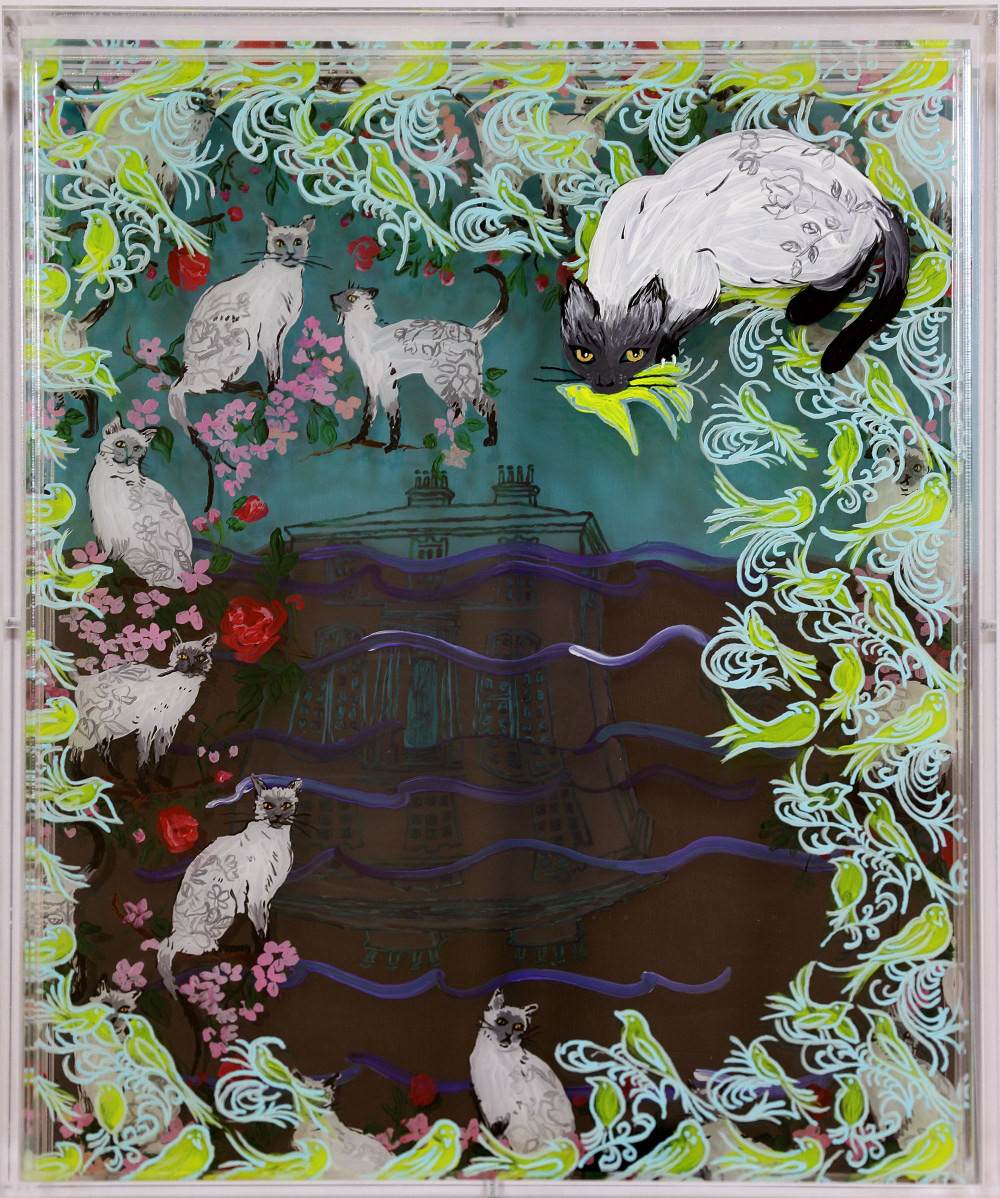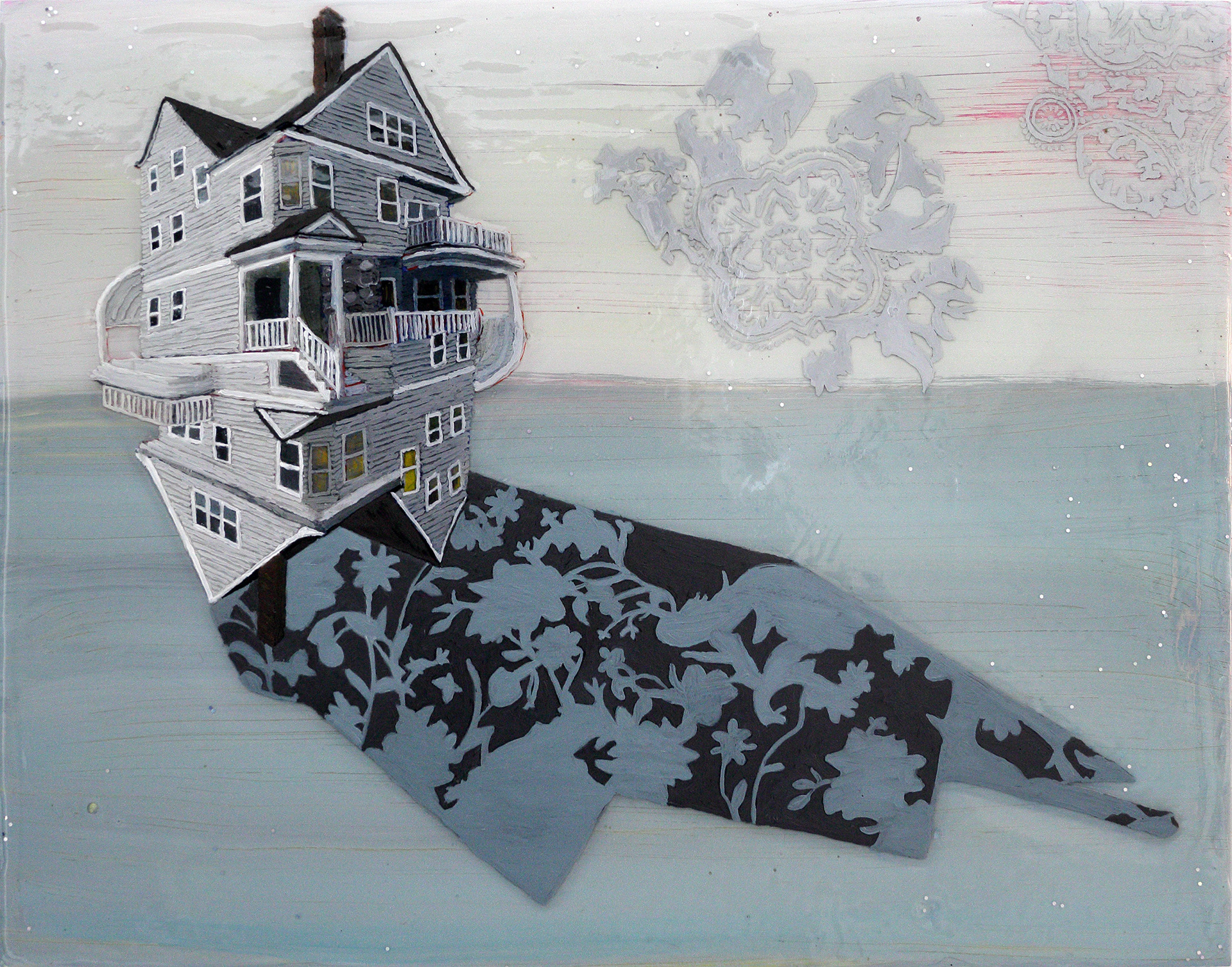Ashley B. Holmes is a contemporary artist working out of QSS, Bloomfield Ave in East Belfast, Northern Ireland.
Ashley studied printmaking, photography and painting at The Massachusetts College of Art and Design in Boston graduating with a BFA in 1991. In 1995 she received a MA in Fine Art Painting from The Chelsea College of Art in London and was resident in the studios at Minute Road, Brixton. Returning to the USA she completed a MFA in Painting and Drawing and a Graduate Teaching Certificate in 1999 from The University of Colorado at Boulder.
Ashley studied printmaking, photography and painting at The Massachusetts College of Art and Design in Boston graduating with a BFA in 1991. In 1995 she received a MA in Fine Art Painting from The Chelsea College of Art in London and was resident in the studios at Minute Road, Brixton. Returning to the USA she completed a MFA in Painting and Drawing and a Graduate Teaching Certificate in 1999 from The University of Colorado at Boulder.
In March 2018 she had a solo show at The Island Arts Centre in Lisburn, Northern Ireland, see artical by Slavka Sverakova.
Ashley's work is exhibited internationally including "Birth of a Nation," Beijing, and "Identity," in Shanghai, China 2016. In 2015 and 2013 she was selected for The Royal Ulster Academy Annual Exhibition at The Ulster Museum, Belfast, Northern Ireland. In 2014 she exhibited in"Method and Material," Gordon Gallery, Derry, and A "Dearth," QSS Gallery, Belfast. "Echo," in 2012 at The Engine Room Gallery, Belfast, "Open EV+A, A Sense of Place," curated by Klaus Ottmann in 2007 in Limerick, Ireland and "The Sefton Open," 2003-2005, The Atkinson Art Gallery, Southport, England.
Ashley has received several awards from The Arts Council of Northern Ireland. Her work was commissioned for the Integrated Arts Project for the Hollywood Arches from the South and East Belfast Trust in 2005. In 2003 she was asked to create a visual exhibition to coincide with the Down Arts Opera Fringe Festival on Puccini. "Puccini's Protagonists," exhibited at The Down Arts Centre in Downpatrick and the Waterfront Hall in Belfast, consisted of six miniature staged operas in boxes. She was a long standing active member of Array Studios in Belfast before moving to QSS.
All work is copyrighted
Dual Facades
Francesca Biondi interviews Ashley B. Holmes about her ongoing body of work
FB: Over the past 11 years you have created numerous mixed media pieces featuring historical American houses. Where does your fascination with them come from?
AH: I was born near Boston, USA and moved to Northern Ireland in 1999. I was homesick and I thought a lot about my hometown in New England, about its history and architecture. My Grandfather and Great Uncle were not architects but they built their own houses and added rooms when they had children. Between them they built houses in Colonial, Federal, Greek Revival and Queen Anne styles. I have painted their houses and many others from that area. After a visit to the Ulster-American Folk Park I tried to imagine how the early settlers built the first fragile, flammable houses to protect themselves from the harsh winters, wolves and Native Americans. The settlers must have felt desperate for a sense of safety and control over the environment.
FB: Patterns are another very important element that appears in your works, they look like wallpaper patterns. Their use results in unique representations of houses where their interiors and exteriors can be visible at the same time.
AH: I began to juxtapose the architecture with patterns of fabrics and wallpapers from New England in the 1700-1800s hoping to divine some understanding of the early American mentality. I felt that cultural desires and beliefs must express themselves through the decoration and architecture. I looked at the repetitions of the decorative motifs and architectural features and one thing I see in them is a desire for control over the environment thus many of my houses exist in a pattern rather than a natural landscape.
I researched the history of the architecture and aesthetics of early America. Gradually, however, the subject has become more intuitive. Now the work speaks of internal things. I use a house and a pattern as a starting point. I paint what I can’t understand or I need to process like grief. My paintings teach me how to live.
FB: Let’s look at three of your works in order to explore other important themes, motifs and qualities present in them, but also recurring in many of your pieces. The repetition of architectural features and decorations in your houses create a sense of order and safety. Yet there is a sense of fragility and threat in all of them, they also have a dreamy and surreal quality and look like they could vanish at any time, as the house in The Only Child does.
Image #1 (see below) The Only Child, mixed media on canvas, 25X20X5cm
AH: It is true my houses are not safe, they float, fly, drown and in The Only Child, dissolve. This house in the background has no interior, it is ephemeral or memory. Twins stand in the foreground. One girl is bright, substantial and smiling out at the world and one girl is a line drawing with a protective hand on her sister’s shoulder. The drawn girl can see the horse-like figure emerging from the wallpaper pattern and she is aware of the danger that the substantial girl is not. The characters were inspired in part by the poems of Anna Akhmatova and The Yellow Wallpaper by Charlotte Perkins Gilman. Characters and narratives come to me through the process of painting. I admire the suggested narratives in the work of Peter Doig. My method involved cutting up acrylic transfers and drawings on paper to collage on canvas. I poured a layer of clear acrylic over them and painted over with oils.
FB: Poems and fictional narratives inspire your works, but you also draw inspiration form your own emotions, experiences, and internal arguments like in Everything Was Grey
Image #3 (see below) Everything Was Gray, 2018, mixed media on panel, 35x28x4cm
AH: This painting came into my mind’s eye complete, a vision of a dull, obscured, monochromatic, house in a simple landscape with ocean and a sky. I could picture all the tones of gray perfectly. I had had a death in the family and I was feeling like all the colours had been taken away. I began painting what I intended to be a very somber painting but somehow it ended up bright and optimistic. Usually I start underpainting with bright colours, then I put the muted, controlled colours on top. I poured several layers of acrylic medium and painted over the top layer with oils. I also added some glitter (I love bling). The house has a long cast shadow from an unknown source, the light is impossible but I think it is believable.
FB: A mirror image of a house appears in this work and also in several others, does it have a particular meaning?
AH: I think of the dual house as having two faces the way Janus, Roman god of war and transitions, has two faces, a face for the past and a face for the future. I started making those dual houses with one façade looking out to the world and the other one looking into the subconscious. I studied Jungian psychology and a dual house seems an accurate representation of the mind for me.
FB : The Weight that Drowned Him also feature a double house, this is one surrounded by patterns layered with acrylic sheets. Is a new technique for you?
Image#2 (see below)The Weight that Drowned Him, 2018, acrylic paintings on Perspex, 32x38 x5
AH: This image of a drowning (Northern Irish) house is about a friend of mine from here who committed suicide. I wanted to understand why he made that choice. There are different layers of patterns on acrylic sheets, one of birds, one of flowers and cats, and a cat who has caught a bird. I was thinking about patterns and how they influence us. In society one fits into a pattern of social etiquette and it puts pressure on a person. I was considering Shazia Sikander’s drawings of patterned margins. The cats look innocent with the roses, the birds fly freely, but the truth is the cats kill birds because it is in their nature. When I made this I was also experimenting with a theatre device to create a deeper space by painting on several acrylic sheets mounted in a box frame to add drama.
FB: You obviously had your own histories and stories when you created your works but they can look mysterious and be open to different interpretations.
AH: I hope that people will bring their own interpretations and experiences to the work. I paint about questions rather than answers thus the work aims to be enigmatic.
Note
Ashley B Holmes is an artist based in Belfast and she has extensively exhibited in Ireland, UK and internationally (www.ashleybholmes.com). Francesca Biondi is an independent curator working with artists and arts organisations in Northern Ireland and beyond (www.francescabiondi.com).
This interview is an edited version of a conversation that took place between Ashley B. Holmes and Francesca Biondi while developing ‘Shadowpattern‘, Holmes’ solo exhibition curated by Biondi and recently presented at the Island Arts Centre in Lisburn (14 March – 14 April).
A selection of Holmes’s works can now be viewed at her studio at QSS, Belfast (www.queenstreetstudios.net). You can contact the artist to arrange a private view. Other works can be bought online at www.gallery545.com
All images used are by Tony Corey

